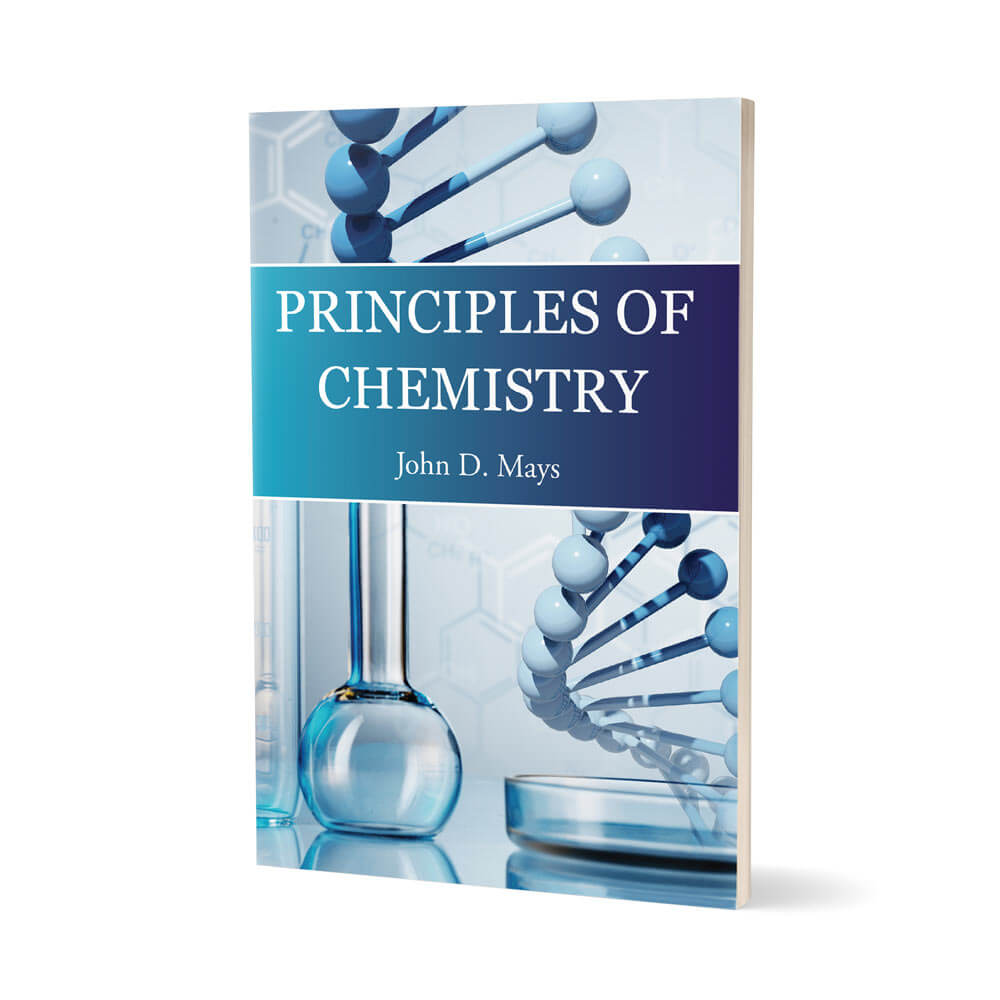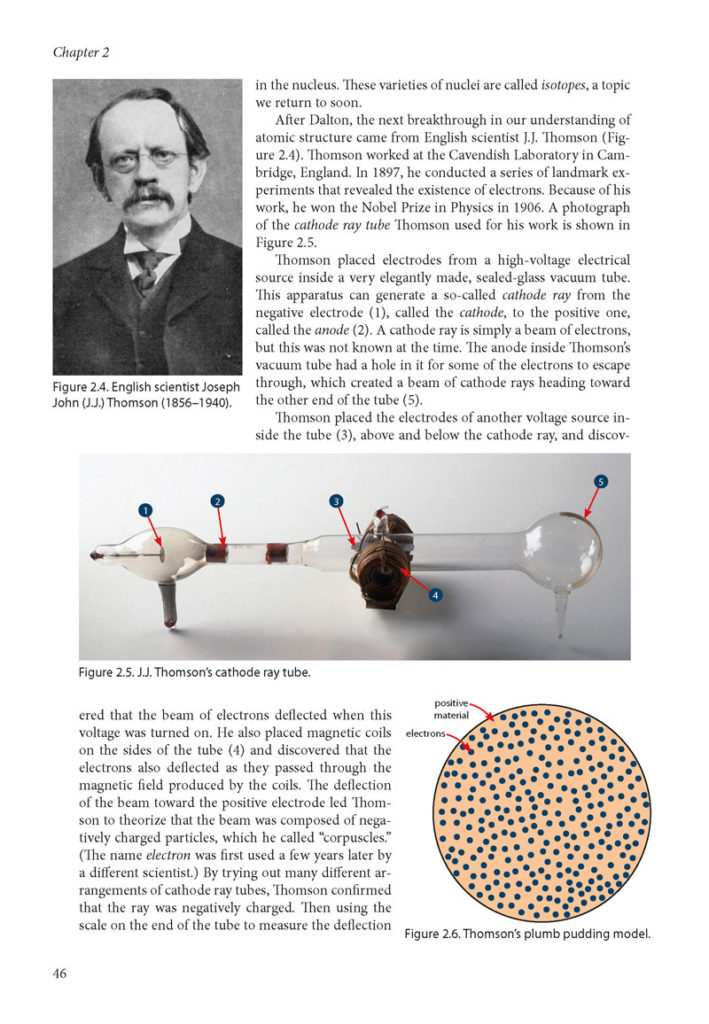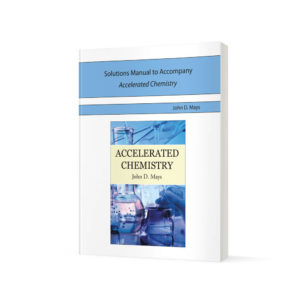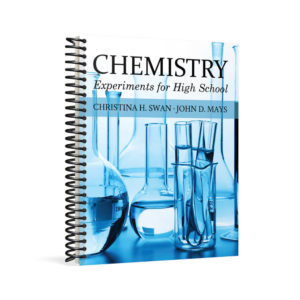Preface for Teachers
|
|
1. Student Audience and Preparedness
|
|
2. Our Emphasis on Mastery, Integration, and Wonder
|
|
3. Recommendations for Teaching With This Text
|
|
4. Laboratory Work and Lab Reports
|
Preface for Students
|
Introduction: What is Chemistry All About?
|
|
I.1 A Few Major Themes
|
|
I.1.1 Chemistry Is All About Electrons
|
|
I.1.2 Chemistry Is All About Electrical Forces
|
| Hmm… Interesting. Why water forms beads |
|
I.1.3 Chemistry Is All About Minimizing Energy
|
|
I.1.4 Chemistry Is All About Whole Number Ratios of Atoms
|
|
I.1.5 Chemistry Is All About Modeling
|
|
I.2 Conclusion
|
|
Chapter 1: Measurements
|
|
1.1 Science and Measurements
|
|
1.1.1 No Measurements, No Science
|
|
1.1.2 Matter, Volume, and Mass
|
|
1.1.3 The US Customary System
|
|
1.1.4 The SI Unit System
|
|
1.1.5 Metric Prefixes
|
|
1.2 Converting Units of Measure
|
|
1.2.1 Basic Principles of Unit Conversion Factors
|
|
1.2.2 Tips for Converting Units of Measure
|
|
1.2.3 Converting Temperature Units
|
|
1.3 Accuracy and Precision
|
|
1.3.1 Distinguishing Between Accuracy and Precision
|
|
1.3.2 Significant Digits
|
|
1.4 Other Important Math Skills
|
|
1.4.1 Scientific Notation
|
|
1.4.2 Calculating Percent Difference
|
|
Chapter 2: Atoms and Substances
|
|
2.1 Atoms and Molecules
|
|
2.1.1 Atomic Facts
|
|
2.1.2 The History of Atomic Models
|
|
2.2 Types of Substances
|
|
2.2.1 Pure Substances: Elements and Compounds
|
|
2.2.2 Mixtures
|
| Hmm… Interesting. Bownian motion |
|
2.2.3 Physical and Chemical Properties
|
|
2.3 Isotopes and Atomic Masses
|
|
2.3.1 Isotopes
|
|
2.3.2 The Unifies Atomic Mass Unit
|
|
2.3.3 Atomic Masses
|
|
2.3 Density and Quantity of Substances
|
|
2.4.1 Density
|
|
2.4.2 The Mole and the Avogadro Constant
|
|
2.4.3 Molar Mass and Formula Mass
|
|
2.4.4 Gram Masses of Atoms and Molecules
|
|
Chapter 3: Atomic Structure
|
|
3.1 Atomic Spectra
|
|
3.1.1 The Electromagnetic Spectrum
|
|
3.1.2 Energy in Atoms
|
| Hmm… Interesting. Neon Signs and Photons |
|
3.1.3 The Hydrogen Atom
|
|
3.2 The Bohr Model of the Atom
|
|
3.3 The Quantum Model of the Atom
|
|
3.3.1 Schrödinger and Pauli
|
|
3.3.2 Shells, Subshells, and Orbitals
|
|
3.3.3 The Aufbau Priciple, the Madelung Rule, and Hund’s Rule
|
|
3.4 Electron Configurations
|
|
3.4.1 Electron Configurations and Orbital Diagrams
|
|
3.4.2 Condensed Electron Configurations
|
|
3.5 Empirical Formulas
|
|
3.5.1 Percent Composition and Empirical Formulas
|
|
3.5.2 Determining a Molecular Formula from an Empirical Formula
|
|
Chapter 4: The Periodic Law
|
|
4.1 The Periodic Table of The Elements
|
|
4.2 Periodic Table Nomenclature
|
|
4.3 Periodic Physical Properties
|
|
4.3.1 Atomic Radius and Bonding Atomic Radius
|
|
4.3.2 Ionic Radius
|
|
4.4 Periodic Chemical properties
|
|
4.4.1 Core and Valence Electrons
|
|
4.4.2 Ionization Energy
|
|
4.4.3 Electron Affinity
|
|
4.4.4 Electronegativity
|
|
4.5 A Few Notes About Hydrogen
|
| Hmm… Interesting. Hydrogen in space |
|
Chapter 5: Chemical Bonding
|
|
5.1 Preliminaries
|
|
5.1.1 Chemical Possibilities
|
|
5.1.2 The Octet Rule
|
|
5.2 Ionic Bonding
|
|
5.2.1 Ionic Bonds and Crystals
|
|
5.2.2 Naming Ionic Compounds
|
|
5.2.3 Energy in Ionic Bonds
|
|
5.2.4 Hydrates
|
|
5.2.5 Intensive and Extensive Properties
|
|
5.2.6 Physical Properties of Ionically Bonded Substances
|
|
5.3 Covalent Bonding
|
|
5.3.1 Covalent Bonds and Molecules
|
|
5.3.2 Polyatomic Ions
|
|
5.3.3 Ionic Compounds With Polyatomic Ions
|
|
5.3.4 Polyatomic Ion Names
|
|
5.3.5 Naming Acids
|
|
5.3.6 Lewis Structures
|
|
5.3.7 Exceptions to The Octet Rule
|
|
5.3.8 Resonance Structures
|
|
5.3.9 Naming Binary Covalent Compounds
|
|
5.3.10 Energy in Covalent Bonds
|
|
5.3.11 Physical Properties of Covalently Bonded Substances
|
|
5.4 Electronegativity, Polarity, and Bond Character
|
|
5.4.1 Polarity and Dipoles
|
|
5.4.2 The Nature of The Bond
|
| Hmm… Interesting. The molecular structure of glass and quartz |
|
Chapter 6: Molecular Theory and Metallic Bonding
|
|
6.1 Molecular Structure
|
|
6.1.1 Covalent Bond Theory
|
|
6.1.2 Valence Shell Electron Pair Repulsion (VSEPR) Theory
|
|
6.1.3 The Effect of Nonbonding Domains on Bond Angle
|
|
6.2 Metallic Bonding
|
|
6.2.1 Metallic Lattices
|
|
6.2.2 Physical Properties of Metals
|
|
6.3 Intermolecular Forces
|
|
6.3.1 Bonding Forces
|
|
6.3.2 Intermolecular Forces
|
|
6.3.3 Hydrogen Bonding
|
| Hmm… Interesting. Tin pest |
|
6.3.4 Van Der Waals Forces
|
|
Chapter 7: Chemical Reactions and Stoichiometry
|
|
7.1 Introduction to Chemical Equations
|
|
7.1.1 Fascinating Chemistry
|
|
7.1.2 The Law of Conservation of Mass in Chemical Reactions
|
|
7.1.3 Reaction Notation
|
|
7.1.4 Balancing Chemical Equations
|
|
7.1.5 Oxidation States
|
| Hmm… Interesting. Why nitrates and nitros blow up |
|
7.2 General Types of Chemical Reactions
|
|
7.2.1 Synthesis Reactions
|
|
7.2.2 Decomposition Reactions
|
|
7.2.3 The Activity Series of Metals
|
|
7.2.4 Single Replacement Reactions
|
|
7.2.5 Double Replacement Reactions
|
| Hmm… Interesting. A story about aqua regia |
|
7.2.6 Combustion Reactions
|
|
7.2.7 Acid-Base Reactions
|
|
7.2.8 Oxidation-Reduction Reactions
|
|
7.3 Stoichiometry
|
|
7.3.1 Stoichiometric Calculations
|
|
7.3.2 Limiting Reactant
|
|
7.3.3 Theoretical Yield and Percent Yield
|
|
Chapter 8: Kinetic Theory and States of Matter
|
|
8.1 Temperature, Kinetic-Molecular Theory, and Pressure
|
|
8.1.1 Temperature and Molecular Energy
|
|
8.1.2 Velocity Distribution of Gases
|
|
8.1.3 The Kinetic-Molecular Theory of Gases
|
|
8.1.4 Gas Pressure
|
|
8.2 States of Matter
|
|
8.2.1 The Four Basic States of Matter
|
| Hmm… Interesting. How barometers work |
|
8.2.2 Solids
|
|
8.2.3 Liquids
|
|
8.2.4 Gases
|
| Hmm… Interesting. Gas diffusion |
|
8.2.5 Plasmas
|
|
8.2.6 Phase Transitions and Phase Diagrams
|
|
8.2.7 Heat Capacity, Heat of Fusion, and Heat of Vaporization
|
|
8.2.8 Evaporation
|
|
8.2.9 Vapor Pressure
|
|
Chapter 9: The Gas Laws
|
|
9.1 Early Formulations of The Gas Laws
|
|
9.1.1 Boyle’s Law
|
|
9.1.3 Avogadro’s Law
|
|
9.2 The Ideal Gas Law
|
|
9.2.1 Standard Temperature and Pressure
|
|
9.2.2 The Ideal Gas Law
|
| Hmm… Interesting. The gas laws as models |
|
9.2.3 Using The Ideal Gas Law to Find Molar Mass and Density
|
|
9.3 The Law of Partial Pressures
|
|
9.3.1 Dalton’s Law of Partial Pressures
|
|
9.3.2 Collecting A Gas Over Water
|
|
9.4 Stoichiometry of Gases and Effusion
|
|
9.4.1 Stoichiometry of Gases
|
|
9.4.2 Gas Diffusion and Effusion
|
| Hmm… Interesting. Uranium enrichment |
|
Chapter 10: Solution Chemistry
|
|
10.1 Dissolution
|
|
10.1.1 The Process of Dissolving
|
|
10.1.2 Enthalpy of Solution
|
|
10.1.3 Entropy and Free Energy
|
|
10.1.4 Electrolytes
|
|
10.2 Solubility
|
|
10.2.1 Ionic Solids in Water
|
|
10.2.2 Ionic Solids in Nonpolar Solvents
|
|
10.2.3 Polar Liquids
|
|
10.2.4 Nonpolar Liquids
|
|
10.2.5 Solutions of Solids
|
|
10.2.6 Gases in Liquid Solutions
|
|
10.2.7 The Effect of Temperature on Solubility
|
|
10.3 Quantifying Solution Concentration
|
|
10.3.1 Molarity
|
| Hmm… Interesting. How soap works |
|
10.3.2 Molality
|
|
10.4 Compounds in Aqueous Solution
|
|
10.4.1 Ionic Equations and Precipitates
|
|
10.4.2 Net Ionic Equations and Spectator Ions
|
|
10.5 Colligative Properties of Solutions
|
|
10.5.1 Vapor Pressure Lowering
|
|
10.5.2 Freezing Point Depression and Boiling Point Elevation
|
|
Chapter 11 Acids and Bases
|
|
11.1 Properties and Nomenclature of Acids and Bases
|
|
|
11.2 Acid-Base Theories
|
|
11.2.1 Arrhenius Acids and Bases
|
|
11.2.2 Brønsted-Lowry Acids and Bases
|
| Hmm… Interesting. What is an alkali? |
|
11.2.3 Lewis Acids and Bases
|
|
11.2.4 Strength of Acids and Bases
|
|
11.3 Aqueous Solutions and pH
|
|
11.3.1 The Self-ionization of Water
|
|
11.3.2 Calculating [H3O+] and [OH–]
|
|
11.3.3 pH as a Measure of Ion Concentration and Acidity
|
|
11.3.4 pH Measurement, pH Indicators, and Titration
|
|
11.3.5 Titration Procedure
|
|
11.3.6 Determining [H3O+] or [OH–] from Titration Data
|
|
Chapter 12: Redox Chemistry
|
|
12.1 Oxidation and Reduction
|
|
12.1.1 Introduction to Redox Reactions
|
|
12.1.2 Oxidation States
|
|
12.1.3 Strengths of Oxidizing and Reducing Agents
|
|
12.2 Redox Reaction Equations
|
|
12.2.1 Redox Half-Reactions
|
|
12.2.2 Balancing Redox Equations
|
|
12.3 Electrochemistry
|
|
12.3.1 Copper and Zinc Redox
|
|
12.3.2 Electricity Instead of Heat
|
|
12.3.3 Electrochemical Cells
|
| Hmm… Interesting. How are salt bridges made? |
|
12.3.4 Electrode Potentials
|
|
12.3.5 Electrochemical Applications
|
|
Glossary
|
Answers to Selected Exercises
|
Appendix A: Reference Data
|
Appendix B: Scientists to Know About
|
References and Citations
|
Image Credits
|
Index
|
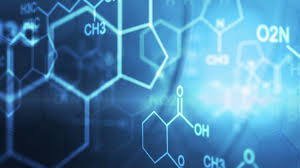 Principles of Chemistry is a mastery-learning, integrated, and wonder-inspiring textbook for high school. Rigor and elegance have met.
Principles of Chemistry is a mastery-learning, integrated, and wonder-inspiring textbook for high school. Rigor and elegance have met.
